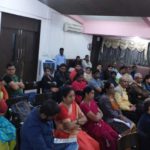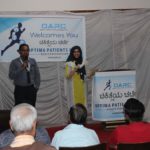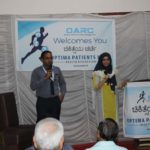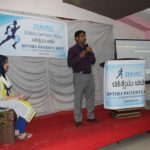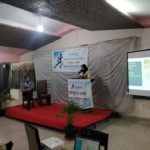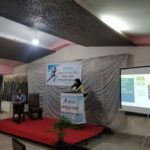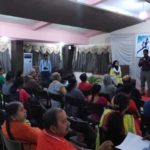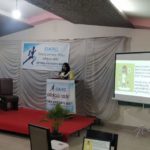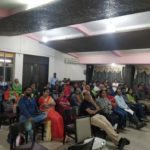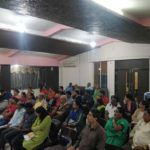What is osteonecrosis?
Osteonecrosis is a bone disease. It results from the loss of blood supply to the bone. Without blood, the bone tissue dies. This causes the bone to collapse. It may also cause the joints that surround the bone to collapse. If you have osteonecrosis, you may have pain or be limited in your physical activity.
Osteonecrosis can develop in any bone, most often in the:
Thigh bone (femur).
Upper arm bone (humerus).
Knees.
Shoulders.
Ankles.
It is also called:
Avascular necrosis.
Aseptic necrosis.
Ischemic necrosis.
Who gets osteonecrosis?
Anyone can get osteonecrosis, but it is most common in men and people in their 30s, 40s, and 50s.
What are the symptoms of osteonecrosis?
Osteonecrosis does not always cause symptoms, especially when it first develops. As the disease gets worse, you may feel pain when you put your weight on a joint that is affected by osteonecrosis. Over time, you may feel pain in the joint even when you are resting.Pain caused by osteonecrosis may be mild or severe. If it causes your bone and joint to collapse, you may have severe pain and not be able to use the joint. For instance, if you have osteonecrosis in the hip, you may not be able to walk.
What causes osteonecrosis?
Osteonecrosis results from the loss of blood supply to the bone. Loss of blood supply to the bone can be caused by:
Medicines or Medical Treatments
Chemotherapy.
Radiation therapy.
High-dose steroids.
Organ transplants.
Medical Conditions
Cancer.
Lupus.
HIV/AIDS.
Gaucher’s disease.
Decompression sickness, also know as divers’ disease, the bends, or caisson disease.
Gout.
Vasculitis.
Osteoarthritis.
Osteoporosis.
Blood disorders, such as sickle cell disease.
Alcohol Use
Excessive alcohol use causes fatty substances to build up in the blood vessels. This can cause a decreased blood supply to the bone, which can lead to osteonecrosis.
Injury
A broken or dislocated bone, or a joint injury, may damage the surrounding blood vessels. This can cause a decreased blood supply to the bone, which can lead to osteonecrosis.
Some people develop osteonecrosis for no known reason.
Is there a test for osteonecrosis?
There is no single test for osteonecrosis. If your doctor suspects you have osteonecrosis, he or she will take your medical history and do a physical exam.
Your doctor may also order one or more tests to see which bones are affected.
These tests include:
X-ray.
Magnetic resonance imaging (MRI).
Computed tomography (CT) scan.
Bone scan.
Bone biopsy.
Measure of the pressure inside the bone.
How is osteonecrosis treated?
Most people with osteonecrosis need treatment.
The goals of treatments are to:
Improve use of the joint.
Stop further damage.
Protect bones and joints.
Your treatment options may include surgery or nonsurgical treatments, such as medicines. Your doctor will determine the best treatment for you based on several factors, including:
Your age.
The stage of the disease.
Where and how much bone has osteonecrosis.
The cause, if known. If the cause is steroid or alcohol use, treatment may not work unless you stop using those substances.
Nonsurgical Treatments
Non-surgical treatments do not cure osteonecrosis, but they may help manage the disease. Your doctor may recommend one or more non-surgical treatments, especially if the disease is in its early stages.
Medications
Nonsteroidal anti-inflammatory drugs (NSAIDs) are used to reduce pain
and swelling.
If you have blood-clotting problems, blood thinners may be used to prevent clots that block the blood supply to the bone.
If you take steroid medicines, cholesterol-lowering drugs may be used to reduce fat in the blood.
Taking Weight Off the Joint
Your doctor may suggest you limit your activity or use crutches to take weight off joints with osteonecrosis. This may slow bone damage and allow some healing. If combined with NSAIDs, it may help you avoid or delay surgery.
Range-of-Motion Exercises
Your doctor may recommend you exercise the joints with osteonecrosis to help improve their range of motion.
Electrical Stimulation
Your doctor may recommend electrical stimulation therapy to help bone growth.
Surgery
Most people with osteonecrosis eventually need surgery as the disease worsens. Some people with early stage disease may need surgery if non-surgical treatments do not help.
There are four types of surgery. Your doctor will decide if you need surgery and what type is best for you.
Core decompression surgery, which lowers the pressure inside the bone.
This increases blood flow to the bone.
Osteotomy, which reshapes the bone. This reduce stress on the damaged joint.
Bone graft, which takes healthy bone from one part of the body and uses it to replace diseased bone.
Total joint replacement, which replaces the joint with a man-made one.
Points to Remember Friendly Title
Points To Remember About Osteonecrosis
Points to Remember Content
Osteonecrosis is a bone disease that may cause pain or limit physical activity.
Anyone can get osteonecrosis, but it is most common in people in their 30s, 40s, and 50s.
Osteonecrosis results from the loss of blood supply to the bone. Without blood, the bone tissue dies and the bone collapses.
Loss of blood supply to the bone can be caused by medicines or medical procedures, medical conditions, alcohol use, injury, or increased bone pressure. It is not always known what causes the loss of blood supply to the bone.
Most people with osteonecrosis need treatment. Your treatment options may be nonsurgical, surgical, or both.
For more info
U.S. Food and Drug Administration
Toll free: 888-INFO-FDA (888-463-6332)
Website: https://www.fda.gov
Drugs@FDA at https://www.accessdata.fda.gov/scripts/cder/daf Drugs@FDA is a searchable catalog of FDA-approved drug products.
Centers for Disease Control and Prevention, National Center for Health Statistics
Website: https://www.cdc.gov/nchs
National Institute of Dental and Craniofacial Research Website: https://www.nidcr.nih.gov
American Academy of Orthopaedic Surgeons Website: https://www.aaos.org
The Hip Society
Website: https://www.hipsoc.org
National Osteonecrosis Foundation
Website: https://www.nonf.org
Arthritis Foundation
Website: https://www.arthritis.org
If you need more information about available resources in your language or other languages, please visit our webpages below or contact the NIAMS Information Clearinghouse at NIAMSInfo@mail.nih.gov.
Asian Language Health Information
Spanish Language Health Information
Publication/Catalog Link
Download this topic as an EPUB
Osteonecrosis (Avascular Necrosis), Questions and Answers about



